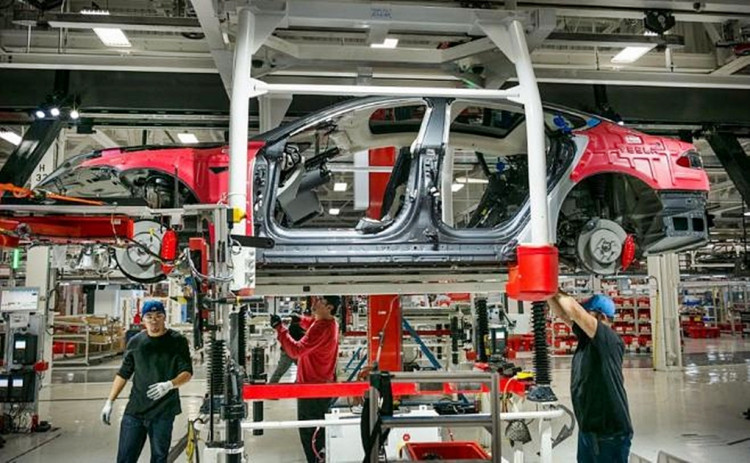Despite skepticism from product experts, Tesla CEO Elon Musk continues to insist his company can build its mammoth Gigafactory in Shanghai, China for about $2 billion
This amount, while massive, is less than half of what it cost Tesla to build its most modern Gigafactory (this one producing Tesla Model 3 all-electric four-door sedans). It cost over $5 billion to build Gigafactory 2 in Fremont, California, and this factory is jammed to the gills producing the Model 3, as well as the Model S and Model X.
"We're confident we can do the Gigafactory in China for a lot less," Musk told investors during the company's earnings call late last week. Musk's reason for optimism: he said Tesla has learned lessons the hard way from the experience of building its first two Gigafactories in the United States. These hard knocks will allow Tesla to build the Shanghai Giga factory more efficiently, or so Musk claims.
The Shanghai municipal government gave Tesla the green light in July to build the Shanghai Giga factory after years of negotiations with Chinese officials. The first Tesla electric cars should begin rolling off the Shanghai production line within three years, said Musk.
Many remain unconvinced by Musk's optimism as regards the factory build and the car production numbers, however. "I think it would be more than $2 billion if we're baking in delays," said Tu Le, head of Beijing-based research firm Sino Auto Insights.
He said a host of construction problems await the factory, such as production process or delays or receiving certain approvals from the Chinese government.
Other experts are skeptical Tesla can build the Shanghai Gigafactory for less than half the cost of the previous two. They noted that Tesla has missed production targets for the Model 3, and is burning through cash as a result. Tesla could face similar problems in China.
Tesla also hasn't revealed how it plans to fund the Shanghai Gigafactory, but its earnings announcement revealed plans to raise capital from Chinese investors. This will be another problem.
Tesla is the largest maker of electric cars in the United States. It produces its Model S, X and 3 all-electric vehicles at Fremont. Last May, Trump admitted the Fremont factory was overloaded with and said Tesla would announce locations for two new Tesla factories as early as this summer.
The first of these locations is China. Tesla has since confirmed the move to China and the building of Gigafactory 3. On July 10, Musk signed an agreement with officials of the Shanghai municipal government to build a factory capable of producing 500,000 electric vehicles per year. Shanghai officials said the Tesla factory is the largest foreign-funded manufacturing project in Shanghai's history.
Analysts said a Chinese factory will help Tesla avoid the new import taxes since the firm can now make its cars in China, and then sell the cars directly to Chinese consumers or to those in other Asian countries.
"Last year, we announced that we were working with the Shanghai municipal government to explore the possibility of establishing a factory in the region to serve the Chinese market," said Tesla in a statement. "Today, we have signed a Cooperative Agreement for Tesla to start building Gigafactory 3, a new electric vehicle manufacturing facility in Shanghai."
Tesla noted it will take some two years until before it starts producing vehicles, and another two to three years for the factory to ramp up to producing 500,000 vehicles per year.






